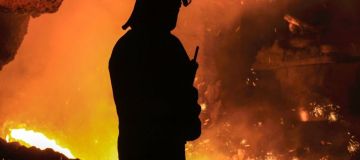Eight of the best bottles of bourbon, from Hudson’s whiskey to Old Forester

Bourbon is the American spirit. This is the sort of line that might be used in an advert, but it’s true – bourbon is only bourbon if it’s brewed in the USA. And for some purists, only Kentucky will do. The most well known American whiskey is Jack Daniels, which uses the same method of production, but the doctrinaire will baulk at the suggestion that it’s bourbon, given that it’s brewed in neighboring Tennessee.
This might seem to outsiders like provincial squabbling, but Kentuckians are fiercely proud of their native drink. They tell each other stories about its inception – disagreeing on whether Pastor Elijah Craig stumbled upon the characteristic distillation process by accident or by design, but agreeing that something about the limestone springs that feed their rivers gives it its distinctive flavour.
In 2007, Kentucky senator Jim Bunning sponsored a resolution declaring September National Bourbon Heritage Month. Bunning’s endeavor speaks to something that anyone who has ever drunk vodka in Moscow knows – that booze isn’t always just booze. It can be a statement of identity, just as much as an industry or a sports team. Bourbon is a vital part of Kentuckian self-conception, just as whiskey is an essential part of the American story. When a cowboy in a John Ford movie orders a drink in a saloon, and the barman plonks a whole bottle in front of him, he’s drinking bourbon.
Read more: Eight of the best vodkas
Other than geography, what makes a bourbon? The grain is key – while scotch is made using barley, bourbon requires at least 51 per cent corn in its mash (grain mixture). It also must be aged in new, charred-oak barrels, which gives it its singular amber hue, as the liquor interacts with the smooth, browned wood underneath the char. The rigidity of the regulations on making bourbon is more to do with the prevalence of tampering and dilution by distillers in the 19th century than idealism.
Bourbon’s current popularity belies its humble origins in the farmhouses of rural Kentucky. Export sales in 2014 hit $1bn for the second year in a row, leading Eric Gregory, president of the Kentucky Distillers Association, to call this the ‘golden age of Kentucky bourbon’. The British in particular have gone bourbon-crazy; with one brand (Woodford Reserve) reporting a 100 per cent increase in sales in 2014. Some might call this the Mad Men effect (protagonist Don Draper is often seen sipping it): Kentuckians might prefer to think of it simply as long-overdue recognition. Whatever the reasons, it’s safe to say the future looks amber.
